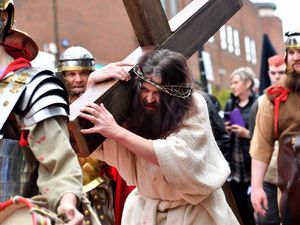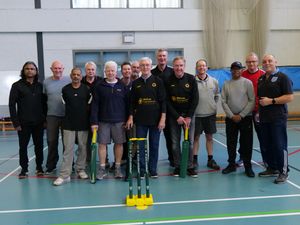Plaque unveiled at Walsall home of Bletchley Park codebreaker
He became a leading expert in code-breaking during the Second World War and it is thought his efforts helped to bring an earlier end to the conflict.
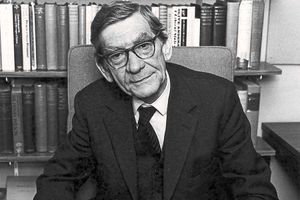
During the war, Germany believed that its secret codes for radio messages were indecipherable to the allies.
But the meticulous work of code-breakers based at Britain's Bletchley Park cracked the secrets of German wartime communication, and played a crucial role in the final defeat of Germany.
And Walsall-born Sir Harry Hinsley was a key part of the effort in decrypting Nazi wireless traffic.
At the weekend a blue heritage plaque was unveiled where he had once lived at 28, Rowland Street in his honour.
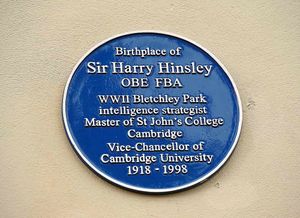
Born November 26, 1918, Walsall.
His father was a miner, and his mother was a school caretaker.
In 1937 won a scholarship to study at St John's College, Cambridge.
While studying at Cambridge, he was recruited as a code-breaker to Bletchley Park.
Sir Harry Hinsley deduced lots of information on the German navy.
Helped initiate programme of seizing Enigma machines.
On April 6, 1946 he married Hilary Brett-Smith, who also worked at Bletchley Park.
After the war he returned to Cambridge, where he lectured in history.
Awarded OBE 1946 and knighted 1985.
Died February 16, 1998.[/breakout]
Sir Harry's family were in attendance for the unveiling ceremony, performed by Town Mayor Peter Smith, which was a fitting way to mark 70 years since Victory in Europe Day.
But it is widely thought that but for the efforts of the likes of Sir Harry and the intelligence work carried out at Bletchley Park, the anniversary might not have been for another two years.
He was born at the home in Birchills in 1918 and as a child attended Queen Mary's Grammar School before earning a scholarship to St John's College at Cambridge University in 1937.
After war broke out two years later the young Harry was recruited to the naval section at the Government Code and Cipher School at Bletchley Park - a stately home near Milton Keynes where some of the great British minds had been assembled to break down German intelligence.
It was there he became a leading expert on decrypting Nazi wireless traffic and he later supplied crucial information which helped win the battle against the German U-boats in the Atlantic.
Sir Harry died in 1998, aged 79, and his relatives travelled to Walsall to see him honoured this weekend.
His brother Arthur Hinsley, sister Sarah Pugh, his son Hugo Hinsley and daughter Clarissa Lloyd were all in attendance with their families.
Sir Harry was made OBE in 1946 for his work at Bletchley Park and later knighted in 1985.
After the war he returned to St. John's College which has co-funded the plaque along with Walsall Civic Society and Sir Harry's family.
He later became vice-chancellor of Cambridge University.
Mayor Smith said: "Reading about Harry he had many qualities and is described as being an approachable, friendly and memorable character, patient and persistent in everything he did.
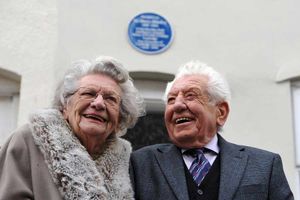
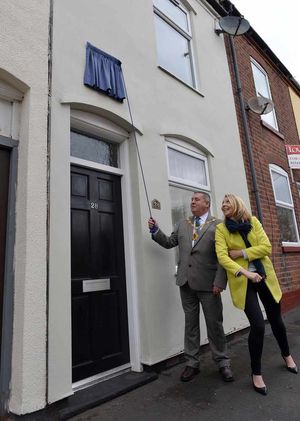
"He was I hear a great teacher, an important writer, and a notably competent administrator.
"Past Cambridge students speak of the extraordinarily vivid way in which he taught them.
"The research school in the history of international relations that he established at Cambridge in the 1960s and 1970s was one of his greatest achievements."
The Enigma story began in the 1920s, when the German military, using an Enigma machine developed for the business market, began to communicate in unintelligible coded messages.
The machine enabled its operator to type a message, then scramble it using a letter substitution system, generated by variable rotors and an electric circuit.
To decode the message, the recipient needed to know the exact settings of the wheels.
German code experts added new plugs, circuits and features to the machine during the pre-war years, but its basic principle remained the same.
The first people who came close to cracking the Enigma code were the Polish.
Close links between the German and Polish engineering industries allowed the Polish Cipher Bureau to reconstruct an Enigma machine and read the Wehrmacht's messages between 1933 and 1938.
In 1939, with German invasion looming, the Poles shared their information with the British, who in turn established the Government Code and Cipher School at Bletchley Park.
Mathematicians and intelligence experts, with the help of primitive early computers, began the complex and urgent task of cracking the Enigma code.


